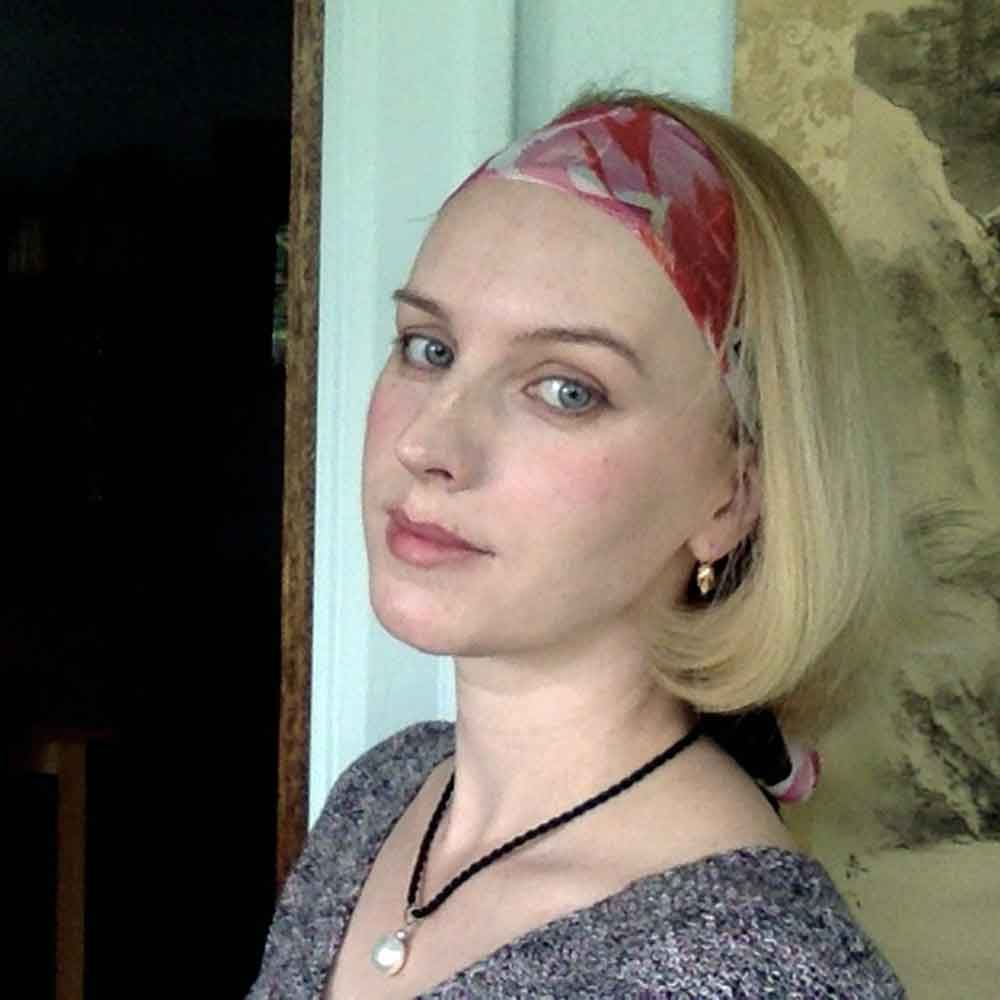Several years ago, while writing a philosophy dissertation about moral saints and drinking ungodly quantities of coffee at night, I came across two real-life stories that ended up having a profound effect on me. I found these stories in A Common Humanity, by the Australian philosopher, Raimond Gaita. Each story is merely one paragraph long, and describes only a tiny moment in the lives of two very different people.
So much has changed in my life since I first read that book by Gaita. Back then, I was living in Phoenix, Arizona, and my daughter was only three years old. I was hopeful about finding an academic job, and Arizona hummingbirds had a habit of balancing themselves charmingly right outside my office window, as if asking me questions I wanted to answer. I’m living in Seattle now, and my sweet daughter is nine years old. I started writing poetry recently. I never finished my dissertation, and I do not have an academic job — or even, right now, a job — and Seattle crows rudely drop down from the sky searching for something they know not what, or else, they complain. But the two stories I’m about to tell you remain with me, close to me, unable to close somewhere inside of me, and I find myself thinking about these stories almost every day.
THE M STORY
Gaita writes that he was once acquainted with a woman (he calls her M) who was in deep grief over the death of her child. Gaita gives us no other information about M before describing the following episode:
M was watching a television documentary on the Vietnam War which showed the grief of Vietnamese women whose children were killed in bombing raids. At first she responded as though she and the Vietnamese women shared a common affliction. Within minutes, however, she drew back and said, “But it is different for them. They can simply have more.” […] M did not mean that whereas she was sterile they were not. Nor did she mean that as a matter of fact Vietnamese tended to have many children. Hers was not an anthropological observation. She meant that they could replace their dead children more or less as we replace dead pets.
I imagine M in a small room with bookshelves, in an armchair with a footrest, watching TV. I can hear her uttering, “But it is different for them,” and the way she keeps her eyes on the TV as she speaks, the way she waves her hands in a gesture that bespeaks, “The topic is exhausted.” And does she then simply change the channel or get up to make a fresh cup of coffee? Or does she say nothing else, sinking deeper into her own grief, unimaginable in its own right? And what did Gaita say to her? What would I say to her?
M’s racism is so casual, effortless. To deny someone her full humanity can be that easy. In this story, M does agree that the Vietnamese women suffer when they lose their children, but, as Gaita explains, her remark reveals that they don’t suffer like we (white people, in our Western culture) do, surely not as deeply as we do. To M, people like us enjoy a richer inner life and, inside that life, our joys, hopes and pains all come with a deeper meaning for us. Our inner life is like a high-res color image, a crisp, eye-popping photo on our iPhones, whereas, their inner life is like an old, slightly blurry Kodak photograph with nostalgic hues of grays and browns. And if they love, it is not fully love, just as their suffering is not full-bodied suffering. That’s just how the Vietnamese are. So, as M sees it, it is easier for the Vietnamese mothers to deal with their loss; that’s the reasoning behind, “But it is different for them.”
I thought of M while reading a poem by Matthew Olzmann, titled “Imaginary Shotguns.” Olzmann dedicated this poem to Jordan Davis (and many other kids like him), a 17-year-old high school student who was shot in “self-defense” by a Florida man, Michael David Dunn, in 2012. “There’s a kid with an imaginary shotgun, / and the men who claim to see it will return with real guns,” Olzmann writes. In this beautiful, moving poem, young African-American men go about their lives hoping “the night sky is glorious, and the birds / are really singing,” not realizing that other people imagine them hiding shotguns and posing continuous threat. To me, this poem brought to mind how a sentiment “but it is different for them” can also cause fear, leading to supposedly justified suspicions and violence.
Why do imaginary shotguns exist? Because there is a widespread perception that young black males live in a world where violence is normal, and harming someone else is no big deal, and maybe, the sentiment follows, young black males simply don’t value life the way we do. “That’s just how they are,” I can hear someone saying (I did in fact hear someone say this once), waving her hand like M did. So, then, within this realm of reality, of course the Jordan Davis’s of this world are imagined with shotguns and of course those who “defend” themselves feel fully justified in their actions. It is hardly surprising that in states with Stand Your Ground laws (as in Jordan Davis’s case), white defendants are much more likely to be found “justified” in court for killing a black “attacker,” as opposed to a white one.
Whenever I think of M and imagine her waving her hand dismissively as she says, “But it is different for them,” I wonder what I can do to make sure I don’t ever wave my own hand at anyone from somewhere in the depths of my heart. I know what the philosophers have been telling us to do: to read as much literature as possible and especially literature written by writers and poets from diverse backgrounds. There is a long-standing view found, for example, in the writings of Martha Nussbaum and Richard Rorty, that literature, and especially the novel, can help us develop better moral imagination and moral sensitivity. And so, let’s read widely to imagine better. Let’s read to glimpse different inner worlds, self-conceptions, values, childhood memories, family photo albums, first loves, beloved places, secrets that haunt. Pain in every conceivable shade of blue.
THE NUN STORY
In the 60’s, as a teenager, Gaita worked as an assistant in a psychiatric ward, helping to care for people who had been institutionalized for many years, long abandoned by family members. By any objective measures, the lives of these patients had been reduced to pure biological machinery, and, at that level, it would seem to us that their existence had been stripped of not only the most basic self-respect, but also of meaning altogether. Consider this chilling description from Gaita: “When patients soiled themselves, as some often did, they were ordered to undress and to step under a shower. The distance of a mop handle, we then mopped them down as zoo-keepers wash down elephants.”
Yet, despite these patients’ dire conditions, there was a group of psychiatrists at the ward who devoted themselves to improving the lives of those patients. Their decency and their determination to help greatly impressed young Gaita. These psychiatrists “spoke, against all appearances, of the inalienable dignity of even these patients.” It impressed me too. Imagine them! Imagine their sincerity, their efforts to change protocols, their clean white coats and open smiles!
And then this happened:
One day a nun came to the ward. In her middle years, only her vivacity
made an impression on me until she talked to the patients. Then everything
in her demeanor towards them — the way she spoke to them, her facial
expressions, the inflections of her body — contrasted with and showed up
the behavior of those noble psychiatrists. She showed that they were,
despite their best efforts, condescending, as I too had been. She thereby
revealed that even such patients were, as the psychiatrists and I had
sincerely and generously professed, the equals of those who wanted to
help them; but she also revealed that in our hearts we did not believe this.
[…] Her behavior was striking … for its power to reveal the full humanity of
those people whose affliction had made their humanity invisible. Love is
the name we give to such behavior.
Gaita’s nun is a wonder. How had her demeanor revealed the dignity of these patients? How did she do it? Was it the gentle look in her eyes? The way her hand touched their hands? The way she smiled? And what exactly did she reveal? Imagine being in that room with her, standing next to Gaita, maybe holding a cup of coffee, feeling the effects of that revelation. Are you now experiencing a rational realization about the dignity of all human beings, a realization similar to “all human beings are mortal/therefore I’m mortal”?
Gaita writes that the nun had revealed the humanity of these patients through the purity of her love. Her love proved the reality of their dignity and proved, too, that their dignity requires us to reach out without condescension.
But dignity is such an abstract philosophical concept! I confess now to you, readers, that when I think about this nun, when my mind returns to this story, often involuntarily, during moments of absent-minded day-dreaming, it’s not dignity I’m thinking about. I think instead about birds. In Dostoevsky’s The Idiot, Prince Mishkin said that all children are “little birds.” “My god!” Mishkin says, “When that little bird is looking at you like that, full of trust and happiness, you feel ashamed of lying to her! I call them little birds because nothing in the whole world is better than a bird.”
So does a tiny bird, then, continue to live inside each of us well into old age? My daughter’s bird is a green parakeet with a sharp blue tail and a warm little body (warm like a tiny oven) that pulses and pulses, endlessly it seems, pulses as if its only organ is a heart, as if trying to prove that all living hearts are made for flight. This little bird — is it akin to that mysterious soul we all have, that brute, rudimentary, warm, pulsing “I-am-here-I-am-here!” of our experiences? Is this what the nun revealed? And does it matter if the bird inside me or you or anyone is deep or shallow, so long as it flutters, so long as it sings, so long as someone notices its magic and sings in return?




